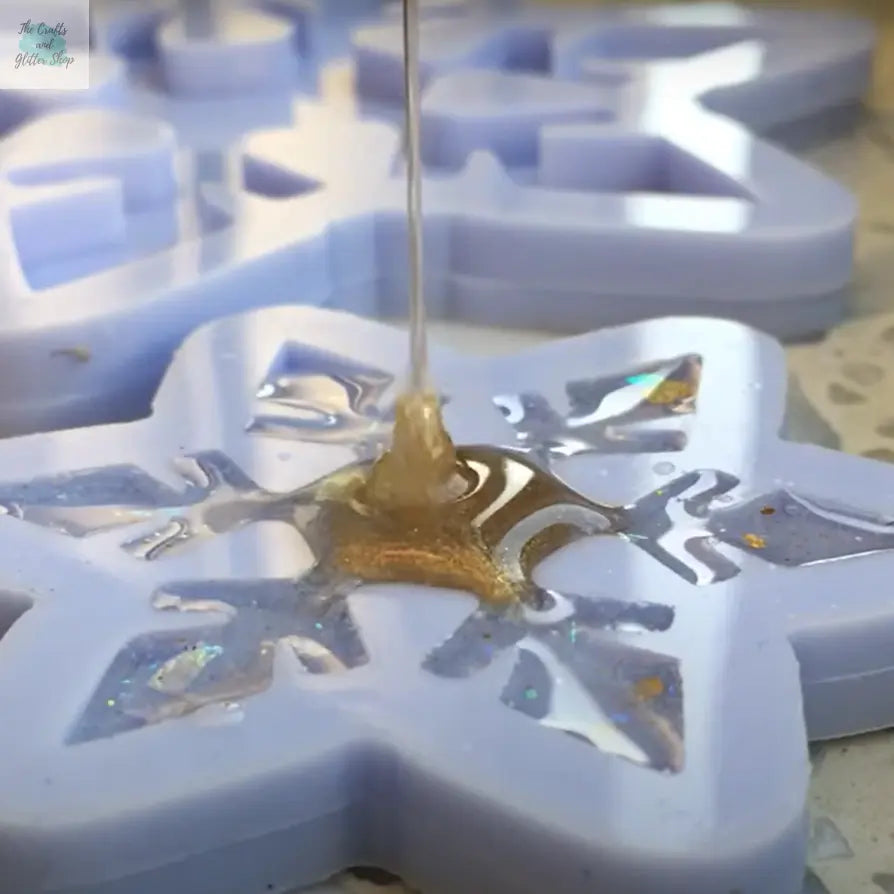
Top 8 Effects of Improper Mixing Ratios in Resin
Share
Resin is a versatile material used in a variety of applications, from crafting to industrial manufacturing. However, achieving the perfect resin finish requires careful attention to detail, especially when it comes to mixing ratios. Here are the top 8 effects of improper mixing ratios in resin:
1. Incomplete Curing
Incorrect mixing ratios can lead to incomplete curing of the resin, resulting in a tacky or soft finish that is prone to damage. This can compromise the durability and longevity of the final product.
One of the key factors in preventing incomplete curing is ensuring accurate mixing ratios. Resin products typically require a specific ratio of resin to hardener for proper curing. Deviating from this ratio can result in incomplete curing and a compromised finish. Be sure to carefully measure and mix the components according to the manufacturer's instructions.
2. Brittleness
Deviation from the recommended mixing ratios can cause the resin to become brittle and prone to cracking. This can affect the structural integrity of the finished piece and make it more susceptible to damage. This occurs because the chemical reaction between the resin and hardener is disrupted when the ratios are not followed accurately. As a result, the resin may not cure properly, leading to structural weaknesses in the finished piece.
When the resin becomes brittle and prone to cracking, the structural integrity of the finished piece is compromised. This means that the piece is more likely to break or shatter under stress. Whether you are creating a piece of art, a functional object, or a piece of jewelry, maintaining the structural integrity is essential for the longevity and durability of the item.
Due to the brittleness and cracking caused by deviating from the recommended mixing ratios, the finished piece becomes more susceptible to damage. Any impact or stress placed on the piece can result in cracks, chips, or even complete breakage. This not only affects the aesthetic appeal of the piece but also its functionality and overall quality.
3. Yellowing
Improper mixing ratios can also lead to yellowing of the resin over time. This discoloration can detract from the aesthetic appeal of the finished product, especially in applications where clarity is important. For example, in the production of clear resin jewelry or tabletops, any discoloration can significantly impact the overall look of the piece. This can result in customer dissatisfaction and a negative impact on the reputation of the manufacturer.
4. Poor Adhesion
Resin that has not been mixed correctly may have poor adhesion properties, leading to delamination or detachment from the substrate. This can result in a weak bond that compromises the overall strength of the project.
Properly mixed resin ensures that all components are evenly distributed, resulting in a uniform chemical reaction. This uniformity is essential for achieving the desired strength and durability of the final product. Incomplete mixing can lead to areas of weak adhesion, compromising the structural integrity of the project.
Failure to mix resin correctly can have serious consequences for the final project. Delamination, where the layers of resin separate from each other or from the substrate, can occur. This weak bond can lead to structural failure and compromise the overall strength of the project.
5. Excessive Bubbles
Incorrect mixing ratios can introduce air bubbles into the resin mixture, which can be difficult to remove and result in a bubbly or uneven surface. This can detract from the smooth, professional finish desired.
The main culprit behind air bubbles in resin surfaces is incorrect mixing ratios. When the resin and hardener are not mixed in the proper proportions, the chemical reaction may not occur as intended. This can lead to the entrapment of air within the mixture, creating those unwanted bubbles.
Air bubbles in resin surfaces can compromise the integrity of the final product. Not only do they create an uneven texture, but they can also weaken the structure of the resin. This can result in a less durable finish that is more prone to damage over time.
To avoid the issue of air bubbles in resin surfaces, it is essential to follow the manufacturer's instructions regarding mixing ratios. Use precise measuring tools to ensure the correct proportions of resin and hardener are combined. Additionally, stirring the mixture slowly and methodically can help minimize the introduction of air into the resin.
Furthermore, degassing the resin mixture before pouring can help eliminate any remaining air bubbles. This can be done using a vacuum chamber or heat gun to remove trapped air and ensure a smooth, bubble-free finish.
6. Shrinkage
Deviation from the proper mixing ratios can cause the resin to shrink during curing, leading to warping or distortion of the final product. This can affect the dimensional accuracy and overall quality of the project.
When the resin and hardener are not mixed in the correct proportions, the chemical reaction that occurs during curing is thrown off balance. This imbalance can cause the resin to shrink unevenly, leading to warping or distortion of the final product. This can affect the dimensional accuracy and overall quality of your project.
7. Crystallization
Improperly mixed resin may undergo crystallization, forming a cloudy or grainy texture that is visually unappealing. This can ruin the clarity and transparency of the resin, especially in applications where optical properties are important.
Resin crystallization occurs when the resin components are not thoroughly mixed. When resin is not mixed properly, the molecules do not bond correctly, leading to the formation of crystals within the material. These crystals scatter light, giving the resin a cloudy or grainy appearance.
To prevent resin crystallization, it is crucial to ensure that the resin components are mixed thoroughly and evenly. This can be achieved by following the manufacturer's instructions carefully and using the correct mixing ratios. Additionally, using a gentle stirring motion and taking your time during the mixing process can help prevent crystallization.
8. Resin Waste
Using incorrect mixing ratios can result in wasted resin, as the mixture may not cure properly and need to be discarded. This can lead to increased material costs and project delays, impacting both budget and timeline.
Failure to adhere to the specified mixing ratios can result in the resin not curing properly. This means that the material will not harden as intended, leading to a sticky or tacky finish. In such cases, the entire batch may need to be discarded, resulting in wasted resources and increased costs.
Wasting resin due to incorrect mixing ratios can significantly impact your budget. Not only will you need to purchase additional materials to replace the discarded batch, but you will also incur additional labor costs. Moreover, project delays are inevitable as you wait for new materials to arrive, pushing back your timeline and potentially affecting other aspects of the project.
In conclusion, achieving the desired results with resin requires precise attention to detail, especially when it comes to mixing ratios. To learn on best practices for measuring and mixing resin, visit The Ultimate Guide to Mixing Resin Perfectly and The Most Accurate Ways to Measure Resin.
